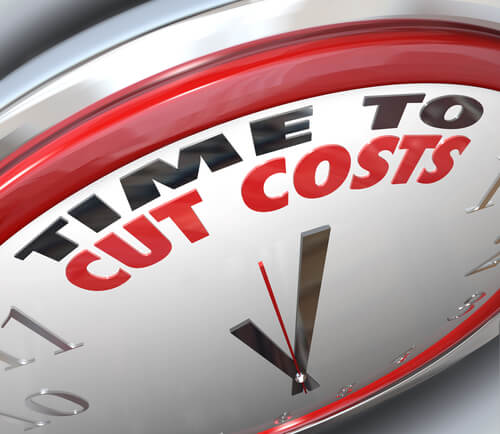
Smart Spending: Know Thy Purchasing Personality & Why Money Mindfulness Matters
I’d like to preface this entry by saying: this post is really fun; I’m so excited for you to get past this introduction and read on; just wait for the surprises I have in store for you! But first read the introduction, of course. Please. Money Mindfulness. Or perhaps, “Mindful Spending”, if you’d like. Guess what it is! No, it’s not the latest #trending New Year’s resolution (#moneygoals, #holla4dolla). It’s not the topic of a dope, inspirational TedTalk, gone viral, either. Nope, sorry, it’s also not the title of my new financial wellness self-help book for radiologists.
To be honest, it’s not even a new term or concept; back where I’m from, they kinda just call it, “paying attention to your spending and what you buy.“ You might also call it: “self-explanatory common sense of the commonly ignored variety (as it’s all too easy to fall into spending-related patterns of thinking and behavior that lead to financial troubles)” and/or “life-experience preferable not to learn the hard way.” But, as we are not here to play games (entirely), I’ll get on with it.
Yes, it even applies to you, my high-earning radiologist friends! Did I just catch a whiff of an eyeroll? Well, if so, this post is definitely for you! Below you’ll find some valuable insights, tips, and, yes, a little bit of weirdness to help you brush up on your spending-smarts and to understand what that actually means.
If you’re a radiology trainee, someday you’ll be making an above average physician salary. If you’re a practicing radiologist, you’re already making an average salary of $427K. With that kind of income, you shouldn’t have any money worries—right? Wait—are you telling me you find it hard to meet your expenses each month? This sounds more like a spending problem than an earning problem.
You can’t outearn dumb spending
-Gregory Karp (The 1-2-3 Money Plan)

That quote is a bit misleading so let me explain. I don’t judge you by how you spend your money. Money is a resource that gives us choices, and how we opt to spend money is a reflection of our values. So what is dumb spending? It’s when our dumb-spending self ignores those values to buy something that our smart-spending self wouldn’t.
Are you the person who spent $50 in Beanie Babies thinking they would increase in value? Or $100 on clothes for your avatar when you could have bought clothes for yourself? Have you bought a rare exotic cucumber from a guy who said it would bring you good luck? Or bought a 5-lb bag of peach rings when you were high? These stories were all submitted by people who admitted to “the dumbest things they’d spent money on.”
Now back to the quote. I share it to emphasize that for everyone, no matter how much they earn, there is a limit to how much that income can compensate for overspending.
Keep reading to find out what kind of spender you are and take a voyeuristic look into what people spend money on. Maybe it will trigger some memories of your own dumb spending. And spoiler alert: you don’t want to miss my list of “12 ways you can spend less for more.”
Self-reflection: What kind of a spender are you?
Some people are natural savers who may be viewed as cheapskates and risk-averse (ahem), some are big spenders and like to make a statement, and others take pleasure in shopping and buying. Others rack up debt—often mindlessly—while some are natural investors who delay satisfaction for future self-sufficiency. Many of us may display more than one of these characteristics at given times, but will usually revert to one main type. Note: Radiologists have been well-trained in delayed gratification.
What is your money personality?
Saver
Do you close the refrigerator door quickly to keep in the cold? Do you enjoy looking at your bank and brokerage statements?
Shopper
Do you get great emotional satisfaction from spending money? Do you find it hard to resist buying things you don’t need?
Debtor
Do you make impulse buys that aren’t even satisfying at the time of purchase? Are you deeply in debt? Note: student loans may not count here.
Investor
Are you striving to amass enough wealth to be financially independent?
Why is spending important?
The financial media focuses mainly on increasing income. Get rich in real estate! Let us manage your money and double your earnings! This credit card will give you 6% back!
Indeed, many of you could change jobs and potentially double (or more) your income as a radiologist. In reality, if you want to increase your wealth, it’s often much more effective to increase income than it is to decrease spending.
But there are exceptions. For example, if you’re spending more than you can reasonably earn or you’re living on a fixed income. In these situations, a spending adjustment may be the best strategy.
How does your spending compare with others?
If you want to make a big impact on your wealth through decreased spending, I suggest you focus on the big-ticket items. What do you spend most of your money on? In the U.S., most of a family’s income goes towards taxes, followed by housing (up to a third of overall spending), “other” goods and services (entertainment, clothes, services), transportation, food, insurance and pensions, savings, and healthcare.
If you’re interested, the Consumer Expenditure Survey by the Bureau of Labor Statistics breaks down how people spend their money, including everything from, literally, dollars (contributed to savings accounts) to donuts (bakery).
An average family, with an income before taxes of $78,635, spends their money on the following:
| Shelter | $11,747 |
| Pensions & Social Security | $6,831 |
| Food at home | $4,464 |
| Utilities | $4,049 |
| Vehicle purchases | $3,975 |
| Food away from home | $3,459 |
| Health insurance | $3,405 |
| Entertainment | $3,226 |
| Other vehicle expenses | $2,859 |
| Other housing expenses | $2,270 |
If you’re like most early-career (and even some mid- to later-career radiologists), you will have most or all of the above expenses plus student loan debt. But you also earn, on average, three to five times or more what the average family is bringing in. Most radiologists that I know spend more than $14,017 on shelter and other housing expenses.
So if you’re looking to significantly reduce spending, the first place to start is often housing. The reason housing costs so much is because of the purchase price and mortgage costs, property taxes and insurance (which rise with the assessed value of the house), maintenance costs (which rise with the size of the house), utilities (also more costly in larger homes), and furnishings.
The larger the house and the more expensive your tastes run, the more you will spend on furniture, window coverings, appliances, oriental rugs, artwork, etc. Some experts recommend budgeting 10% to 50% of a home’s purchase price for furniture. That means a $250,000 home would give you a furniture budget of $25,000 to $125,000. Whoa!
Data during a pandemic proves that people’s spending habits can change
If you think you can’t save more or spend less, just look at how U.S. families have changed their spending during the coronavirus pandemic. Roughly two-thirds of Americans, 64%, say their spending habits have changed when comparing August 2019 with August 2020.
Many employees, including radiologists, have been working from home during the pandemic, which typically affects their commuting and dining expenses. But spending in other categories, such as gym memberships, travel, online shopping and even pet expenses, have also changed substantially.
| Category | 2019 Monthly Spend | 2020 Monthly Spend | YOY Change |
| Investments | $940 | $1,334 | 41.91% |
| Pets | $160 | $197 | 23.13.% |
| Education | $699 | $818 | 17.02% |
| Home | $1,831 | $1,997 | 9.07% |
| Food & Dining | $1,862 | $920 | 6.73% |
| Health & Fitness | $270 | $286 | 5.93% |
| Shopping | $766 | $810 | 5.74% |
| Gifts & Donations | $275 | $287 | 4.36% |
| Loans | $583 | $608 | 4.29% |
| Kids | $443 | $431 | -2.71% |
| Personal Care | $133 | $127 | -4.51% |
| Fees & Charges | $139 | $129 | -7.19% |
| Business Services | $355 | $326 | -8.17% |
| Auto & Transport | $670 | $609 | -9.10% |
| Travel | $584 | $458 | -21.58% |
| Entertainment | $120 | $93 | -22.50% |
| Bills & Utilities | $623 | $474 | -23.92% |
| Financial | $871 | $612 | -29.74% |
Source: Mint. The financial spending category includes expenses for services such as financial advisors and life insurance, while the investment category includes actual investments transactions. YOY = year over year
Easy spending changes
As I’ve already said, I don’t judge people by how they spend their money (as I hope they don’t judge me). But if you’re incredibly busy (like most radiologists), with work often spilling into your evenings, weekends, and holidays, you might not be as aware of how your money is spent as you’d like to be.
You might be overspending on things and not realize it, or there may be relatively simple ways you can put a dent in your spending without sacrificing quality of life. In some cases, you might be able to get MORE gratification by spending less.

12 Ways you might be able to spend less for more:
- Say NO to extended warranties and other junk insurance
- Comparison-shop before renewing home and auto insurance (and consider increasing deductibles)
- Refinance your mortgage (at the time I’m writing this, rates remain at or near all-time lows)
- Cancel landline phone service (are you using it?)
- Rightsize and comparison-shop your wireless phone plan (Are you 55 or older? T-mobile offers unlimited talk, text, and smartphone data for $27.50/line)
- Review TV, cable and internet service and beware automatic subscription renewal. Are you using what you’re paying for? Is it time to cut the cord? (Check out this article by yours truly about FREE video services)
- If you’re an impulsive online shopper, let the items sit in your cart for 24 hours (I’ve tried it – it works!)
- Don’t walk into an auto dealer and pay full price for a car (try emailing a few dealers with the details of the car and add-ons you want and ask for bids)
- Don’t pay more than you need for financial advice (especially if it isn’t good advice)
- Don’t carry a balance on a credit card
- Take advantage of rewards cards (I like the Citi Double Cash Card that gives 2% back on all purchases and has no annual fee)
- Use online savings and checking accounts (I like Ally – I don’t pay any fees and the interest rate is generally one of the highest you can get – unfortunately, that’s only 0.5% right now)
I’m aware that this list only scratches the surface. I could go on and on with ways you might be able to pay less for more. Every person’s financial situation is unique and not every tip will apply to you. Use what works and ignore the rest.
Remember:
The only dumb spending is that which buys things of no value (you define) or that limits your ability to buy other things of greater value. Money buys options and the more money you have, the greater number of choices you have. But at some point, you can spend more than your income allows. Note: banks and other lenders will not be concerned if you overborrow to the point that your financial plan derails. They will not care if you have a satisfying retirement or have to work until you’re 80. They only care that you have a radiologist’s salary and can use that to pay them back.
Thoughtful spending, which might mean a “time-out” from hitting ![]() could mean the difference between one of the best purchases you ever made and a lifetime of regret.
could mean the difference between one of the best purchases you ever made and a lifetime of regret.
Bonus tip: Along with free movies, most local libraries also offer a plethora of free downloadable TV shows, eAudiobooks, eBooks, music, e-magazines and digital newspapers. I get 99% of my reading material online from the library. I can’t remember the last time I paid for a book that wasn’t related to my work (and I’ve gotten a lot of those from the library too). I read my eBooks on the Kindle app, which syncs my iPhone to my iPad, so that I always have the book I’m reading with me everywhere I go. I gladly pay my property taxes, a portion of which goes to supporting my library. Readers are leaders!
